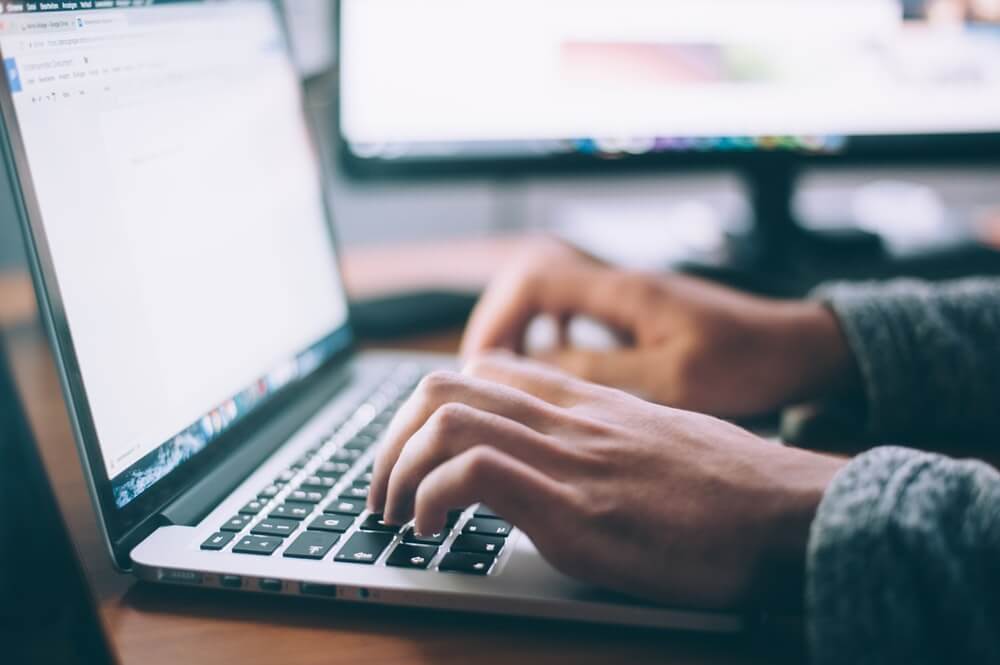Education
Career Opportunities in the Video Game Industry
Published
2 years agoon
By
admin
The video game industry will reach an annual turnover of 173.7 Billion dollars in 2017, according to the study ‘Analysis of global investment in games’ by the firm Digi-Capital , which shows us the potential of the world’s leading entertainment industry.
Great potential that offers sales opportunities for all kinds of devices: classic desktop and portable consoles, specialized PCs for games, tablets and smartphones that drive the global industry from mobility, and new machines and formats that aim to get a good chunk of this fabulous cake.
Also software, with the big video game franchises for PC and consoles achieving fabulous sales and revenue figures and with games leading sales and downloads in the app stores for mobile devices. Also online multiplayer titles with subscriptions in the millions or with the free-to-play phenomenon on the rise, opening up new business possibilities in a great opportunity for the video game industry.
Table Top consoles
The launch of the new generation of consoles from Sony and Microsoft is driving the sector upwards as evidenced by their sales figures. More than four million PS4 units and three million Xbox One units sold in a month since launch confirm the good reception of both.
Special but negative mention for Nintendo. After leading sales in the previous generation of consoles with Wii, it has announced a large drop in the sales forecast for Wii U, leaving a gloomy outlook for the great global video game firm and the need for a new strategy, among which is rumored a new console model.
Everything points to an exchange of ‘cards’ between the big three although they will all have to fight with other formats that are coming with force for play in the home room. The console sales boost is key to additional – not minor – sales of official and third-party game controllers, as well as a number of accessories and peripherals.
In terms of software, the great video game sagas (GTA, Call of Duty, FIFA and a long etc) reach fabulous sales figures and even more so the great Nintendo titles (Mario, Zelda…) where the Japanese company has its real asset, although it depends more than any other on the sale of hardware.
Portable Consoles
As in sectors such as compact cameras or digital players, the boom in mobile gaming (tablets and smartphones) is penalizing sales of this type of portable machines dedicated to playing video games. And this despite the fact that the gaming experience is still superior to any other mobile device on the market.
Although the Nintendo 3DS is still the best-selling console on the market today (including desktops), the Japanese firm has just lowered its sales forecast to 13.5 million units per year compared to initial forecasts of 18 million.
The situation of the other big player in the sector, Sony’s PS Vita, is even more delicate and it is even rumored that Sony could leave the portable sector due to weak sales. Selling a PS4 and PS Vita combination kit at a discounted price could work to loosen stock of the handheld, but in the future it will need to offer more integration. Perhaps PlayStation Now , Sony’s cloud money gaming service, could be a way out, but in any case we’re still wondering if handheld consoles have a future.
Smartphones / Tablets
One of Digi-Capital’s graphics clearly explains who is and will be in this decade the real promoter of the video game industry and that it is none other than mobile gaming with ‘handheld’ devices such as tablets and smartphones. Its impact on the industry will be such that it will take 60 percent of the total of 100,000 million planned by the firm in 2017.
Although the ‘casual game’ has been on the market practically since the beginning of the industry, the explosion in sales has come with the rise of mobile devices. The same can be said of ‘social’ games for mobility. Both take downloads and profits from the big mobile application stores such as Apple’s iTunes, Google Play or Microsoft Windows Phone. Take Angry Birds as an example, the best-selling game in history on mobile platforms, surpassing one billion downloads in 2012 for a title available for two dozen platforms and operating systems.
Beyond the game that we can consider light, the sector is already seeing the entry of the big studios in the sector with productions that in the future will not envy console or PC games. The rumored entry of Nintendo porting its great titles to mobile platforms could be the ultimate explosion.
pc
Since the very beginning of the computing era, the PC platform has been present in the world of video games and for a good part of users, it is the preferred option over dedicated consoles, due to its versatility and almost infinite capacity.

Laptop
Despite the general slowdown of the PC, manufacturers continue to offer a wide range of specific gaming machines in both desktop and laptop formats. The higher return on profit due to its usually higher cost allows the sector to be kept at least stabilized, and this is no small thing, in the current situation.
In addition, the gaming PC sector is surely the one that offers the greatest sales opportunities through its components. It will be difficult for a user to buy a mid-high range dedicated graphics card if he does not think about running video games. Without much incidence, the same can be said of processors, memories, storage units, chassis or cooling systems, as well as peripherals for PC games that range from dedicated keyboards and mice, special monitors or the same game controllers. You can check 1Win Review.
The trend towards the development of multiplatform games by large studios to save costs, the rise of game services such as Valve’s Steam or the pull of large online multiplayer games, augur a good future for the PC gaming sector.
Social Games
Despite the puncture of the mini-bubble caused by the exaggerated valuation of companies such as Zynga (more than 10,000 million dollars) , the importance of social gaming is undeniable in the take-off of the sector, amidst an enormity of casual or occasional games . Its high degree of addiction and the rise of mobile gaming point to further escalation.
Another noteworthy point is its inclusion in large social networks such as Facebook , in which Zynga came to account for 12 percent of its income, although everything points to a progressive separation of networks operating autonomously. Google also invested in Zynga for what was rumored at the time the launch of Google+ Games as an online entertainment platform based on the company’s games. Now these days Crypto also a part of gaming industry.
Other game modes
– Subscription . World of Warcraft continues to be an example of subscription gaming, reaching peaks of 12 million players. It is also the most popular massively multiplayer online role-playing game (MMORPG), a genre where this type of subscription-based modality is becoming established.
– MOG . Online multiplayer, another popular way of playing via an Internet server that includes some of the most important sagas in the world of video games, such as Call of Duty, Battlefield, Counter-Strike, Quake or StarCraft. Also included are games that run through a web browser written in HTML, JavaScript, or Adobe Flash.
– Free to Play . A mode on the rise that is attracting the big studios and which is said to occupy a prominent place in the future of the video game. It consists of offering the base of the game for free to attract users by monetizing its development based on advertising or by charging for expansions or accessories. Titles like the Asian Super dance dedicated to dance have millions of followers. The game is free but you get to pay large amounts of cash for the purchase of clothing or virtual accessories.
Other formats of gaming machines
The 100,000 million dollars per year that the sector will offer is too juicy a candy for other manufacturers not to try to enter it and in recent months we have been seeing all kinds of proposals, among which the following stand out:
– SteamMachine . The multimedia entertainment and gaming machine designed by Valve for television and living room, with operating system based on Linux Steam OS, is the development with the most potential. Alienware, Falcon Northwest, iBuyPower, CyberPowerPC, Origin PC, Gigabyte, Materiel.net, Webhallen, Alternate, Next, Zotac and Scan Computers are the first manufacturers to market models under the platform, although its ‘open hardware’ concept will allow users to create their own machines, which will allow them to sell their components.
– Ouya . Open hardware-software video game console created through crowdfunding, with Android operating system, NVIDIA chipset and a very affordable price below the $100 barrier. Amazon or GAME highlighted the speed of product sales, which indicated great support from users.
– NVIDIA Shield. Another novel proposal with Android is the handheld gaming machine from the graphics manufacturer, made up of a traditional controller joined by a small touch screen. It allows you to run the thousands of games on the Android platform, the connection to Valve’s Steam platform, the Tegra Zone and even the possibility of streaming PC games.
–Samsung Smartphone Gamepad. The South Korean tech giant also wants to join the party with a mobile phone game controller specially designed for its Galaxy smartphones though it works with all Android handsets. It features an eight-way D-Pad game controller, two analog sticks, four action buttons, two fire buttons, a select button, the start button and a ‘Play’ button. The goal is to make it easy to control mobile games.
FUTURE
– Video game physical retail. These are not good times for the sale of video games in physical format and this affects the traditional store. Despite the hopes of managers such as the COO of Electronic Arts, the general trend towards digital software downloads is unstoppable and the video game sector is no exception. However, the idea of being distributors not only of physical format, but also of digital content, could play an important role in maintaining the business. Also, an added value such as testing a game or device and as we have seen in this special, through the sale of hardware, consoles, computers and all kinds of accessories.
–Steam. _ Valve’s digital distribution platform has taken advantage of the trend of acquiring games over the Internet through digital download. With 75 million active user accounts, Steam offers 3,000 games from major producers like Bethesda Softworks, Activision, Rockstar Games, Square Enix, 2K Games, and Sega, as well as smaller developers. It supports Windows, Linux and Mac OS X operating systems, and partially PlayStation 3, Android and iOS. The promotion of ‘own’ machines such as the Steam Machine, the future availability of titles from other major studios, multi-platform support and the very rise of software downloads in digital format predict great growth for this platform.
– Cloud Computing. Cloud computing is not exclusive to the corporate or education sector and there are already gurus citing it as the future of digital entertainment. Dedicated servers in large data centers where any type of hardware (including televisions) can access by running video games directly on them. There would be no need to buy discs, no dedicated consoles, not even a full digital download of a title. Nor would a particular operating system be needed to run the games.
We have seen some advances with streaming services based on cloud computing such as OnLive or Gankai and more recently, even more powerful proposals such as NVIDIA Grid, the cloud processing solution that the graphics company aspires to position as the future of video games. There is still time for this and many problems to be solved, starting with improving the user’s Internet connections to be able to run video games directly in a data center.
In any case, a revolution that would mean great changes in the entire sector, in game development and obviously in the retailers of the sector.
Trending

 France FR3 years ago
France FR3 years agoGame of Thrones Saison 8 episode 5 streaming VOSTFR

 Education2 years ago
Education2 years agoDoes CBD work as a sleep aid? and its Disorders

 Finance4 years ago
Finance4 years agoWeTransfer Alternatives (based on Outlook and OneDrive) for big file transfers

 Credit Card4 years ago
Credit Card4 years agoKELISTO: How Can I Get Free Credit Card?

 Education2 years ago
Education2 years agoCan Cannabis Cause You to Grind Your Teeth? [Explained]

 Featured4 years ago
Featured4 years agoPERSONAL INCOME TAX. VARIATIONS IN PERSONAL INCOME TAX

 Business2 years ago
Business2 years agoUse of Technology in Education for Learning and Teaching

 Finance4 years ago
Finance4 years ago3 Best Financial Tips
